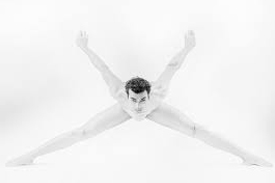 With gymnastics predominantly classed as a sport and dance an art, it seems the boundaries of the two are blurring as dancers aspire to more ways to stand out from the crowd. Gymnastics has always had a connection to dance – at the Olympic Games the gymnasts must incorporate an element of ‘dance’ to their floor routines – however gymnastics and acrobatics do now always belong in dance.
With gymnastics predominantly classed as a sport and dance an art, it seems the boundaries of the two are blurring as dancers aspire to more ways to stand out from the crowd. Gymnastics has always had a connection to dance – at the Olympic Games the gymnasts must incorporate an element of ‘dance’ to their floor routines – however gymnastics and acrobatics do now always belong in dance.
Today dance is constantly evolving to incorporate more content. Often at auditions for vocational schools and college, candidates are asked to perform any tricks they have in their repertoire, and these can be frequently seen in consequent performances both from the student and the college. Even more often these tricks are incorporated into competition routines in order to be more eye-catching and impressive, however some may argue this is at the expense of technique and dance artistry.
The penchée that goes past 180 degrees and the multiple ‘ice skater’ pirouettes with the foot at the ankle go some way in demonstrating the need by some dancers to impress and extend beyond the realm of dance. It goes without saying that a dancer needs a certain degree of suppleness in order to perform to a full capacity, however – especially in the competition circuit – it seems dancers are encouraged to fill dances with oversplit legs and flips. For those adjudicating, this is not always desirable and has moved far from where dance is thought to be.
Pushing the boundaries of dance and choreography is not discouraged, in fact it is celebrated by choreographers, however the incorporation of acrobatics in dances can even be dangerous. YouTube can be a culprit, with young dancers exposed to extreme dance, then inspired to overstretch and push themselves, believing this is the key to success. Injuries can occur that are not usually associated with dance, with young dancers attempting difficult gymnastic poses and extreme forms of stretching, risking immediate and long term physical harm.
